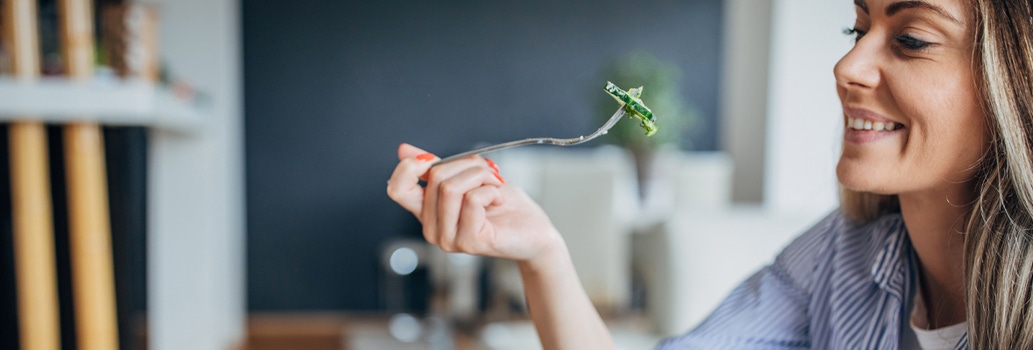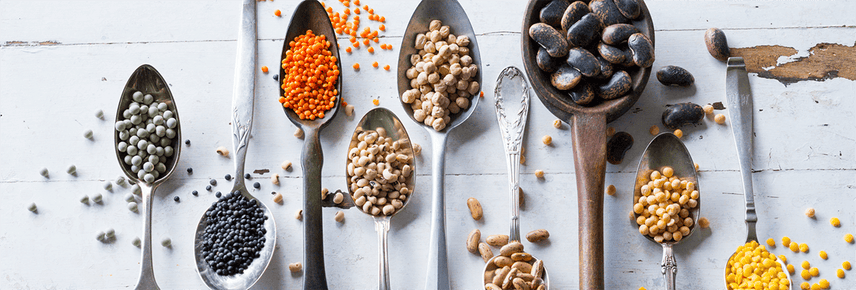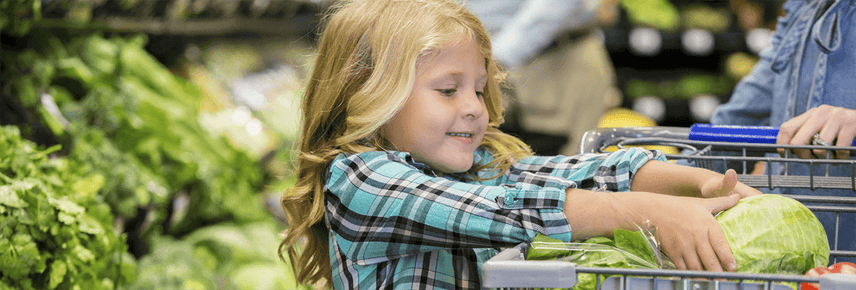
Can you get enough iron from a plant-based diet?
Charlotte Moor NZRD
Getting enough iron is a common concern for people considering cutting down on meat or cutting it out altogether.
And with good reason. Around 10% of Kiwi women are low in iron, so it’s a worry for many of us.
While we’re constantly told that meat is the best source of iron, it’s not the only one. You can get plenty of iron from plant foods too!
In fact, the New Zealand Adult Nutrition Survey shows that about 30% of our iron comes from core cereal foods, such as breakfast cereals and bread, while only 20% of our iron comes from meat sources.
People following a vegetarian or vegan diet tend to eat as much, if not more iron, than people following other dietary patterns. This is mainly due to their higher intakes of green leafy veggies, wholegrains, nuts and legumes – all of which contain iron.
Will I get enough iron from plant foods alone?
The great thing about a balanced plant-based diet is that it can provide all the nutrients our bodies need, including iron. While the type of iron found in plant foods, called non-haem iron, is harder for our body to absorb than haem iron (which is found in meat and animal foods), research over the years has shown that vegetarians who eat a variety of plant foods are not at any greater risk of iron deficiency than people who eat meat. In addition, non-haem iron has benefits of its own.
Vegetarians only get the iron they need. If iron stores are low, our bodies will absorb more non-haem iron from plant foods. This is unlike haem iron from meat, which is absorbed whether we need it or not.
As with most nutrients, too little iron in the diet is not good and too much is also a concern. It’s possible to store too much iron, particularly if we eat large quantities of meat, as our body doesn’t have an efficient way to get rid of the excess.
As vegetarians tend to store less iron, it may be one reason they have lower rates of heart disease, diabetes and colon cancer. People who consume a lot of meat are at higher risk of these conditions. This is partly due to the haem iron in meat, which is a pro-oxidant and can damage cells, unlike the non-haem iron from plant foods.
What are the best plant sources of iron?
Some of the best plant sources of iron are wholegrains (such as wheat, quinoa and amaranth), legumes, nuts, seeds, dried fruits and green leafy vegetables as well as iron-fortified foods like breakfast cereals and plant-based meat alternatives. Eating a variety of these foods each day can be enough to maintain our body’s iron stores.
| Food | Iron (mg) |
| Amaranth (a small and nutritious South American grain), cooked, (1/2 cup) | 2.8 |
| Weet-Bix™ (2 biscuits) | 3.0 |
| Lentils, dried peas or beans cooked (150g - 1 cup) | 3.6 |
| Quinoa , cooked (1/2 cup) | 1.4 |
| Tofu, firm (170g) | 3.4 |
| Cashews (30g) | 1.5 |
| Tempeh, cooked (170g) | 4.6 |
| Marmite™ (5g) | 1.8 |
| Baked beans (150g) | 1.8 |
| Dried apricots (30g) | 0.5 |
| Weet-Bix™ Gluten Free (2 biscuits) | 1.2 |
| Raw spinach (1 cup) | 3.3 |
| Broccoli, cooked (75g – 1/2 cup) | 0.5 |
| Wholegrain bread - 1 slice | 0.7 |
| Vegie Delights™ – Classic Hot Dogs (2 sausages) | 3.5 |
| Vegie Delights™ – Vegie Sausages (2 sausages) | 3.5 |
| Vegie Delights™ – Savoury Mince (100g) | 3.5 |
| Pumpkin seeds/ pepitas (30g) | 2.6 |
| Sesame seeds/ tahini (30g) | 1.5 |
| Chickpeas (150g) | 2.7 |
How much iron do I really need?
The amount of iron you need varies based on your age, gender and life stage. Women between 19 and 50 should aim for 18mg a day and after menopause this lowers to 8mg a day. If you are pregnant the recommendation is for 27mg a day and 9-10mg a day when breastfeeding. For men, the daily Recommended Dietary Intake is 8mg.
How can I improve my iron intake?
Eating a wide variety of plant foods is a great start. You can also cut back on tea (including herbal tea), coffee, cocoa and red wine, which can all reduce the absorption of non-haem iron from plant-based foods. If you do drink coffee or tea, try not to drink it during or directly after meals.
Here’s another favourite tip of mine, vitamin C helps our bodies absorb non-haem iron from plant foods. So, aim to pair foods that are rich in vitamin C, with those that are rich in iron.
It’s easier than you think. Here are 3 ways:
- Top your Weet-Bix (iron) with chopped strawberries (vitamin C);
- A squeeze of lemon (vitamin C) to dress a salad with leafy greens (iron);
- Build your veggie burger (iron) with slices of tomatoes (vitamin C).
Try these iron-rich recipes
Tofu vegetable stack with lemon herb sauce
Greek style butter beans with rocket
Cinnamon muesli
Bean nachos
DO YOU HAVE A NUTRITION QUESTION?
Contact our team of expert dietitians by using the free Ask a Dietitian service - online form here, or you can email or call on 1800 673 392.

The latest nutrition advice, plus health and wellness tips delivered to your inbox monthly
.png)

